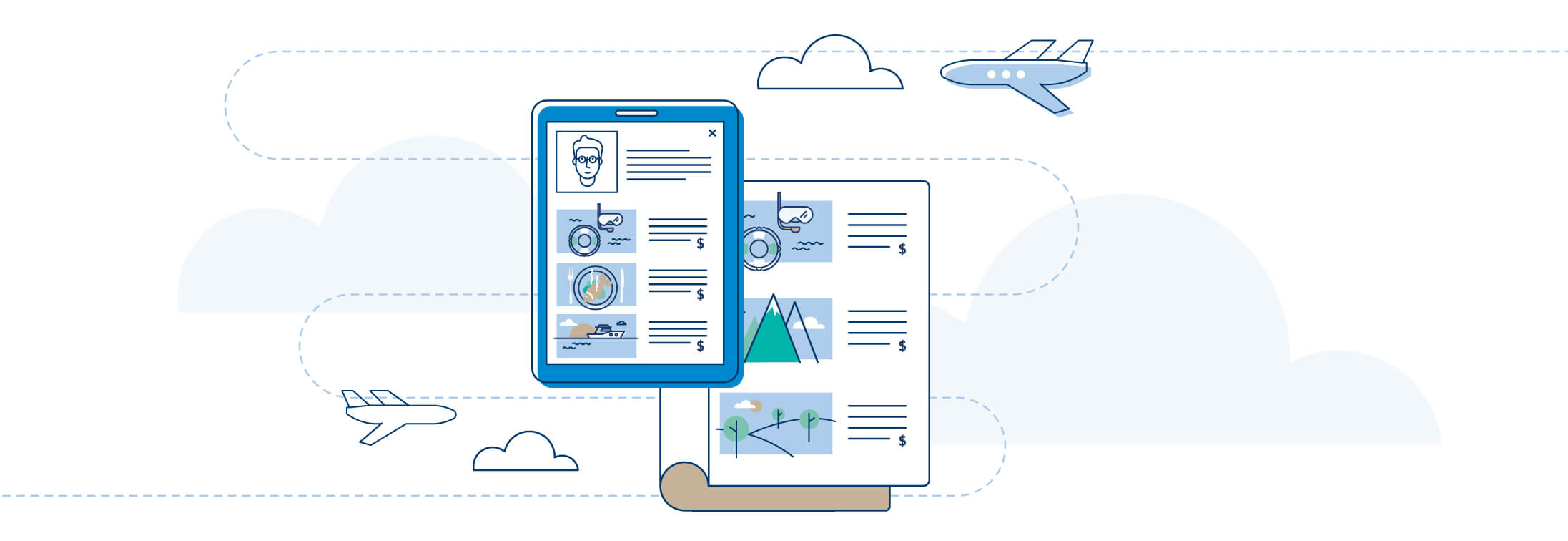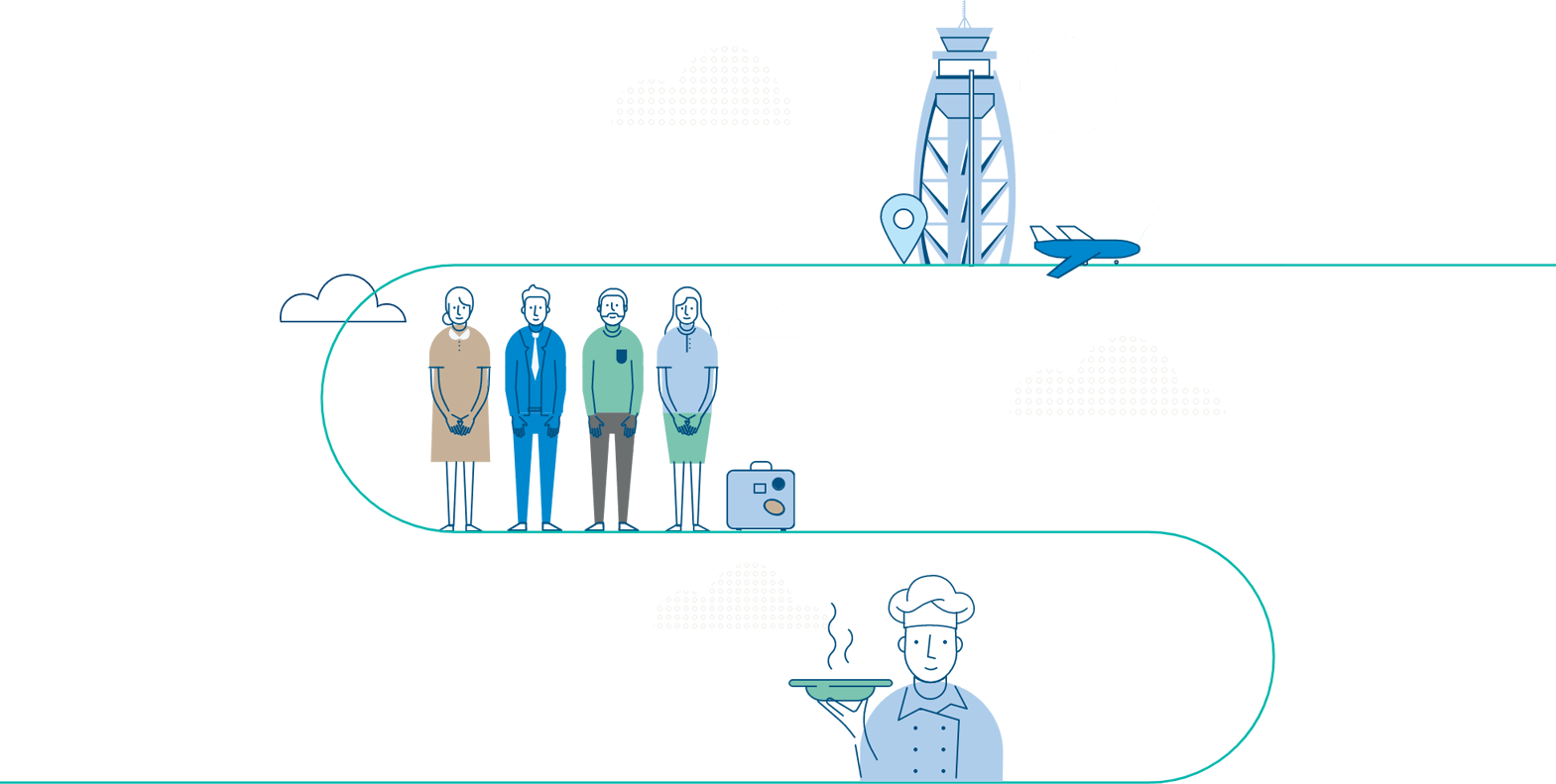Contact us
Contact us

Scroll down
Technology
Inflight retail today and tomorrow
Harnessing digital experiences for revenue growth
Digital-first isn’t a new phenomena in the airline industry. Digital disruption in bookings have already transformed airfare revenues, allowing highly optimised revenue streams from smart services like travel metasearch engines, booking apps, travel concierge and personalised offerings. In comparison, inflight retail revenues have been sluggish to get off the ground.
As airlines venture to meet the expectations of digitally connected consumers, they’re also finding ways to differentiate their existing onboard services from competitors.
Revamping inflight retail and catering technologies is where leading airlines are now cashing in.
Once a plane’s seats have been filled, the next most important channel is extracting voluntary revenue from passengers. Personalised airline retailing is making that happen.

Leveraging digital inflight retail and catering experiences
Modern travellers expect greater autonomy and individuality with their inflight interactions and purchases, with convenience dominating above all else. It is mission critical that airlines target the specific preferences of passengers and offer near-instant interaction, much like an e-commerce transaction.

To deliver this, carriers are deploying improved, connected solutions like improved pre-order experiences and mobile point of sale (POS) devices rich with passenger data.Crews and back office managers can access customer profiling, segmentation and even purchasing history promptly, helping them deliver personally targeted in-flight retail experiences the next time passengers fly. Integration with airline systems is critical.
This information is being increasingly leveraged as airlines’ communication becomes more about the ‘life-cycle’ of the passenger, rather than hitting them with mixed marketing messages as often as possible.
The significant investment in selling fares should extend to selling ancillary opportunities. As we have witnessed at dnata, airlines are looking to their inflight retail provider to help them steer towards this trajectory.
Here’s a quick view of the high-value points for digital concierging and personalised onboard technologies:

Connected POS
Inflight crews equipped with more intelligent POS devices hold critical data capture points for airlines and their retail providers. They can also be used to deliver personalised offers on the fly, enhancing moments of interaction with passengers.

Multiple payment paths
Giving the passenger options removes roadblocks to purchase. People tend to resist that which is forced upon them. Having options alleviates that feeling while allowing airlines to promote paths which show least resistance.

Seamless pre-order
Seamless pre-order processes allow more accurate forecasting and purchasing, reduces negative interaction time and wastage post-flight. Tracking interaction online also allows insight into consideration, when the customers don't purchase.

Smart carts
Connected carts can track detailed purchase behaviour, stock-on-hand and reduce the chance of fraud and tampering. Activity can be linked to crew as well, allowing an opportunity to measure performance.

Loyalty Integration
Loyalty initiatives and personalised retailing can be delivered to new channels, like secondary screens or mobile apps, displaying recommended products rather than generic cataloguing as done by traditional means.
Imagine: A passenger regularly purchases a specific brand of skincare product. Personalised offers can be created not only for onboard purchasing, but also as part of a targeted customer journey when they book their next flight.
When implemented correctly, upselling increases the overall ancillary revenue opportunity, while also enhancing customer experience.
Operational efficiencies and insights for procurement
Airline procurement roles also become more optimised and streamlined with digital. Next-generation buying and procurement uses data analytics and insights to develop smarter buying decisions, partnerships and general supply-chain management. Translating data into business intelligence often means having the right data sources to make smarter decisions.
By capturing data from passenger’s payment profiles, needs, and histories, airlines are also better able to predict ancillary merchandising strategies that cut costs and reduce wasted inventory.

Facing the challenges ahead
A seamless passenger experience, incorporating ancillary opportunities, will dictate how successful an airline will be outside of its core product – the seat.
Not unlike on-ground retailing, catering to each passenger’s unique preferences and offering flexible purchase, delivery and refund processes will be the difference in how successful your onboard store will be.
Sounds interesting? Subscribe to our updates or get in touch through the form below to discuss your inflight services offering.
Jan Hagedoorn, Manager, Commercial | dnata catering October 23, 2018
Did we whet your appetite for knowledge?
Let us know by endorsing this piece.
By clapping more or less, you can signal to us which stories stand out.

44
endorsements
Contact us
Want to improve your retail offering? Fill in the form to schedule a consultation with our experts.
Recommended for you
About dnata catering

Over
63 locations

More than
190
airline customers

Over
117m
meals annually



